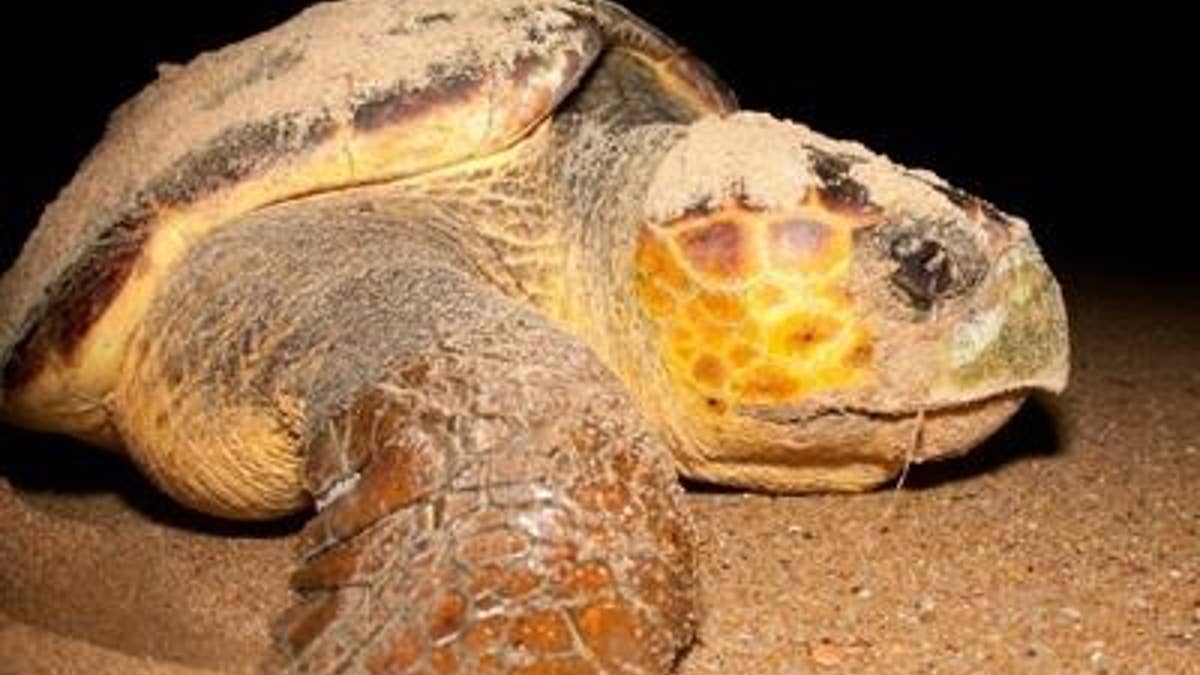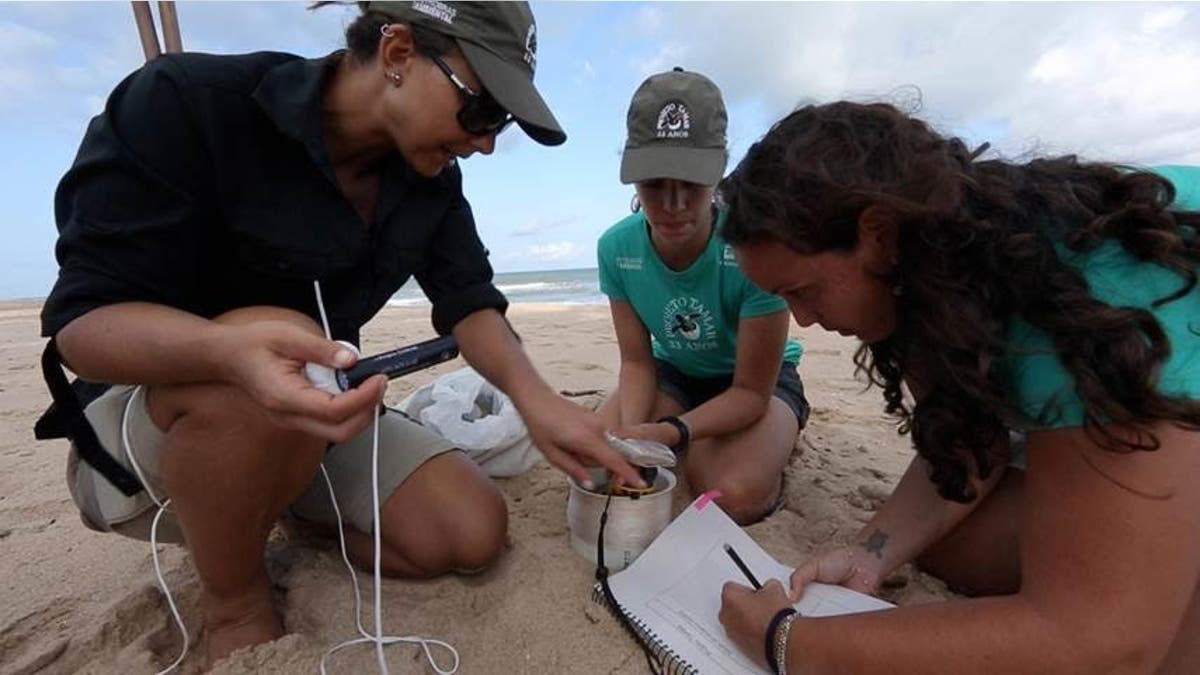
Loggerhead turtle. (Pojecto Tamar)
Rising global temperatures may be blamed for fewer male loggerhead turtles being born, which could lead to a gender imbalance that puts increased pressure on this already endangered species.
Florida State University’s Mariana Fuentes and a team of Brazilian researchers set out to study how temperatures were impacting Brazilian loggerhead turtles – at a time when 2015 marked the second year running where temperatures reached a record high. It was already established that the sex of marine turtle hatchlings was influenced by incubating temperatures, with warmer temperatures producing a higher number of female hatchlings.
A similar trend has been found with some crocodiles.
Related: High temperatures make some lizards change sexes
“We’re concerned we’re going to have a feminization of marine turtles,” Fuentes, a co-author on a study of the findings in Journal of Experimental Marine Biology and Ecology, said in a statement. “This study came from the need to understand the current sex ratio being produced at loggerhead nesting grounds to establish baseline parameters as climate change progresses and to identify beaches that produce a higher proportion of males.”
The finding is the latest evidence that global warming is already taking a toll the natural world. Not only are plants and animals shifting their ranges to stay ahead of the rising temperatures, plants are blooming earlier in the spring and some species are even changing biologically – including some lizards that change sex to beat the heat.
Related: Bumblebees endangered by inability to adapt to climate change

Florida State University's Mariana Fuentes, left, and her team at a nesting site. (Pojecto Tamar)
In the loggerhead study, researchers found an exceptionally strong female bias — 94 percent — in all nesting areas used by loggerhead turtles in northern Brazil. But, scientists were also able to identify nesting beaches in southern Brazil that were producing a higher proportion of male hatchlings — 47 percent — which is essential to sustain the population.
Scientists examined 25 years’ worth of data for 21 nesting beaches throughout coastal Brazil, about 373 miles worth of nesting areas, making it the most comprehensive of its kind.
“It’s worrying that you could have an extreme skew in gender one way,” Fuentes said. “Any changes in population structure can have real repercussions.”
The sex of marine turtle hatchlings is influenced by temperature, with optimal hatching temperatures falling between 75.2 degrees to 93.2 degrees. But, temperatures below 85.1 degrees tend to yield more male turtles and temperatures above that mark typically yield more female turtles.
Related: 2015 was hottest year ever, with records set around the globe
While the turtles study were only in Brazil, Fuentes and her team believe they are applicable in other regions because all turtles have temperature-dependent sex determination. Fuentes plans to expand the research into Florida in the coming year by examining the gender structure of loggerhead turtles in the Panhandle.
The loggerhead turtle, including a species known for migrating 7,500 miles between nesting beaches in Japan and its feeding areas in the Gulf of Mexico, has been listed under the Endangered Species Act since 1978. Their numbers are on the decline in many parts of the world because of threats that include being captured in fishing gear, coastal development, increased human use of nesting beaches pollution and harvesting food and other uses.
